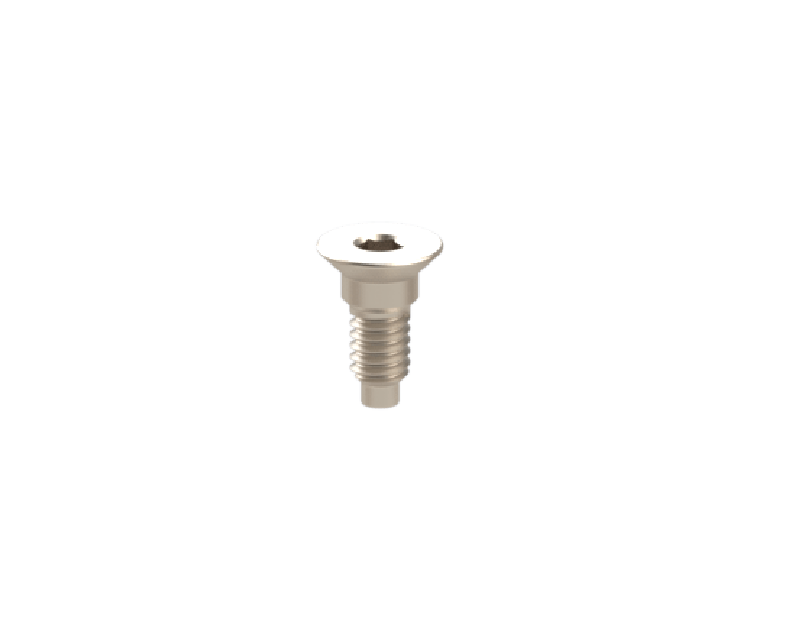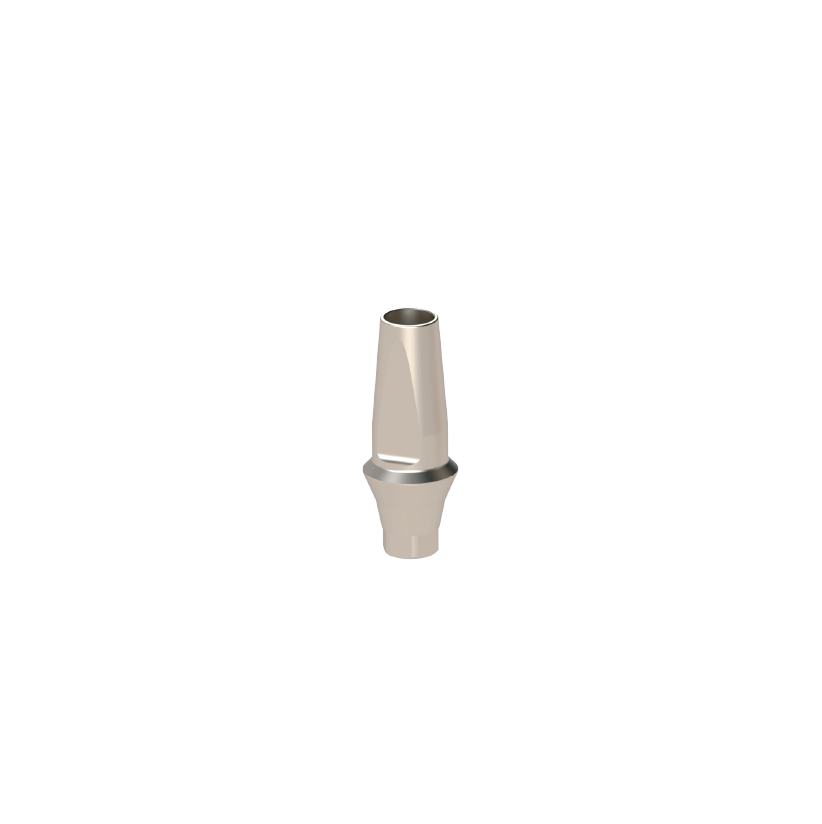
What is the Healing Abutment?

The healing abutment is a crucial component that assists the post-implantation healing process. This modest device ensures the success of dental implant procedures.
More simply put, International Congress of Oral Implantologists, “A healing abutment is a special type of abutment designed to facilitate the healing of bone and soft tissue around a dental implant. It takes approximately 4-6 weeks for the gums to heal after a healing abutment is placed, after which a final abutment can be placed.”
The article will shed light on the healing abutment functions, types, placement procedures, and benefits.
Healing Abutment VS Final Abutment - What is the Difference?
As the name indicates, healing abutments assist in the healing process of the gum tissue around the implant. After the gum tissue has healed, final abutments are placed to join the prosthesis with the implant.
Healing Cap VS Healing Abutment
“Healing abutment”, “healing cap”, or “gingival formers” are interchangeable terms. They support tissue healing, protect the implant, and shape the gum line. Therefore, the three terms are used as synonyms.
What is a Cover Screw?

A cover screw is initially placed right after the implant post is inserted. Its purpose is to cover the top of the implant temporarily. This is to prevent tissue from growing into the implant's internal threads during the healing and bone integration phase. Once the implant fully integrates with the bone, the cover screw is removed.
Healing Abutment
A healing abutment comes into play after the integration period. This component acts as an extension above the gums, connecting to the implant.
To attach the healing abutment, a small incision is made in the gums over the implant site. This allows access to the implant's top. The cover screw is replaced with the healing abutment during this stage, and the implant's stability is tested.
Why is the Healing Abutment Important in Dental Procedures?
The healing abutment facilitates the healing process, shapes the soft tissue, and contributes significantly to the emergence profile. This consequently contributes to the esthetic outcome of a confident smile.
The Healing Abutment Enables the Healing Process
Following the surgical placement of a dental implant, the body regenerates tissue, where the implant fuses with the surrounding bone. This intricate process demands precision and careful management, and that is precisely where the healing abutment comes into play.
The healing abutment is a temporary crown substitute, covering the implant fixture. Its primary function is to shape and guide the growth of the soft tissue during the healing phase. By creating a protective barrier, it prevents unwanted tissue collapse and ensures proper emergence profile formation.
The Healing Abutment Shapes Soft Tissue and Emergence Profile
Soft tissue management is a critical aspect of implant dentistry. It directly influences the esthetic outcome of the final restoration. Healing abutments aid in shaping the gingival contour and enabling the development of an ideal emergence profile.
Types of Implant Healing Abutment
Abutments are classified as straight abutments, standard abutments, angular abutments, and spherical abutments. The straight abutments are the most prevalent.
The standard abutments are similar to the shape of a pin. They do not mimic the characteristics of the natural teeth. Therefore, they do not essentially support the gums.
Angular abutments are connectors that bridge the gap between various surfaces when elements converge at an inclined angle to one another.
Spherical abutments are frequently employed in removable prosthetic applications. Therefore, selecting the appropriate material is crucial for ensuring its performance, durability, and appearance after installation.
For a more detailed overview of healing abutment varieties, please visit our Healing Abutment page.
Healing Abutment Materials: PEEK, PMMA, Zirconia, Resin Composite, and Titanium
Several options are available for manufacturing the healing abutment, each with unique properties and applications Materials Used for Customized Healing Abutment.
Polyetheretherketone (PEEK):
PEEK is a tooth-colored thermoplastic polymer known for its excellent physical, mechanical, and biological properties in biomedical applications.
It is especially valuable as a metal-free alternative for patients with metal allergies.
Polymethyl methacrylate (PMMA):
PMMA is a widely used polymer in dentistry, traditionally employed for provisional restorations.
While it offers advantages like low cost and acceptable aesthetics, it has limitations such as water degradation and low fracture resistance.
Zirconia:
Zirconia, specifically yttria tetragonal zirconia polycrystal (Y-TZP), boasts outstanding toughness, strength, and biocompatibility.
Its phase transformation properties inhibit crack propagation and material failure, making it suitable for customized healing abutments.
However, it tends to be more expensive than some alternative materials.
Resin Composite:
Resin composite is a commonly used dental material, comprising various resins and fillers. It has been employed in the manufacturing of healing abutments. It is often applied to other materials to capture peri-implant soft tissue profiles.
Resin composites offer good fracture resistance and tensile strength.
Titanium:

Titanium is extensively used in dental implants due to its excellent biocompatibility and mechanical properties. Specifically commercially pure titanium (cp-Ti) and titanium alloy (Ti–6Al–4V).
Healing Abutment Installation

The abutment can be installed either directly during the implantation process or after the artificial root has been fully integrated. There are two methods of installation, one-stage and two-stage.
With the one-stage method, a temporary dental crown is custom-made in a dental lab. Then, it is immediately attached to a dental implant along with an abutment during a single session. The engraftment process typically lasts up to six months, after which a permanent one replaces the temporary crown.
With the two-stage method, the abutment is initially set, and the implant is allowed to integrate with the bone tissue securely. This usually takes three to six months. Following the successful integration, the temporary plug is removed, and a dental implant healing abutment is installed.
Furthermore, the connection element can be securely fastened using one of three methods.
The first method is carried out using a screw. This involves creating a hole in the crown through which the abutment is threaded. It is then finished with the application of cement material and polishing. While this installation method lowers the risk of inflammation, the screw design can be vulnerable to breaking.
Another method is carried out using cement. The crown is affixed with cement mortar applied to its inner part. However, cement may seep under the soft tissue, potentially causing infection.
The last method is carried out using a conical. A more modern approach involves attaching the prosthesis by inserting it into a cone-shaped receptacle that accommodates the abutment. This design offers enhanced reliability and remains securely in place during eating.
Potential Complications and Considerations
Avoid implanting an abutment when performing a complete prosthesis for multiple missing teeth or total tooth loss. Likewise, it is best to avoid it in cases of oral inflammation, type 1 diabetes, tuberculosis, viral infections, periodontal disease, inadequate stability of the artificial root, or challenging integration. Furthermore, medical professionals advise against implantation during pregnancy, especially during the initial and final trimesters.
Aftercare Guide of the Healing Abutment
A plastic dressing usually goes over the implant, therefore patients cannot see the healing abutment. However, it is important to remove the plastic dressing when it starts to get loose. Typically, this occurs within a week of the surgery.
First and Second Weeks:
After removing the plastic dressing, it is important to rinse gently around the healing abutment a few times a day. The use of mouthwash and a saltwater rinse is important, particularly after meals. Patients can brush their teeth the day after their surgery. However, they should avoid brushing the healing abutment or the surrounding gum area.
Third and Fourth Weeks:
Patients should wipe the healing abutment a few times a day using an antibacterial mouthwash. In addition, patients should keep using saltwater rinses throughout the day.
Fifth Week onwards:
At this stage, patients can softly brush the healing abutment while avoiding excessive pressure or vigorous brushing. This might cause discomfort to the gum tissue and implant.
Conclusion
Healing abutments are essential components in implant dentistry, playing a crucial role in achieving successful outcomes. They have a significant impact on soft tissue management, emergence profile formation, and overall patient satisfaction. A comprehensive understanding of their functions, types, placement techniques, and aftercare guidelines empowers dental professionals to optimize the use of healing abutments. Consequently, they enhance the quality of their implant procedures and patient care.










